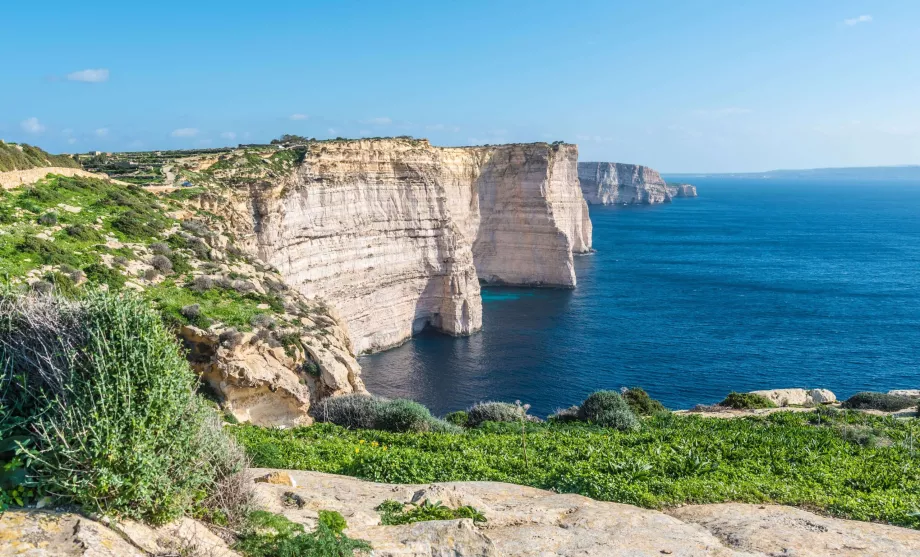Weather in Gozo and best time to go

Gozo is a popular year-round destination, with each season opening up different activity opportunities. The weather in Gozo is very similar to that of neighbouring Malta. Summers in Gozo tend to be very warm, while winters are mild.
The coldest month is January, while the warmest months are July and August. The greatest chance of precipitation is in December. The year is divided into 4 seasons.
Weather and temperatures during the year
This is what the weather in Malta looks like at different times of the year.
Winter
January, February and March are referred to as winter in Gozo. This is the perfect time of year for hiking.
The whole island is blooming, nature is waking up, the hills are dotted with greenery and colourful flowers of the local flora. Although January is considered the coldest month, you can still expect average temperatures of around 12°C. However, bear in mind that if the sun is shining, the temperature feels much higher; on sunny days it's no problem to walk around in just a T-shirt.
The beaches are almost empty in winter, and the brave can enjoy hardening off in the sea, which is around 16 °C. Despite the lower temperatures, this is the ideal time to relax on the beach and catch the sun's rays for the first time. Accommodation prices are at a minimum.
Spring
April, May and June are the spring months. The rainfall decreases significantly, the days get longer and the weather is more stable.
Temperatures average around 17 °C in April, 19 °C in May and over 23 °C in June.
The sea is slowly warming up, with temperatures rising to 22 °C in June. Spring is therefore an ideal time for travelling, exploring, hiking and taking your first dip in the sea.
Accommodation prices are still very reasonable and the number of visitors to the island is slowly increasing, but there is still no need to worry about crowds.
Summer
July, August and the first half of September represent the high season on Gozo.
High temperatures are to be expected, with average temperatures around 27°C, but feel temperatures are considerably higher.
This is the period when you will find the most tourists on Gozo, who come here mainly for swimming, relaxation and water sports. The summer months are all about relaxation, high temperatures, rest and no rush.
If you prefer hiking and actively exploring new places, choose other months instead. If, on the other hand, you are a fan of culture and interesting events, don't miss the local festa festivals that take place throughout the summer. Accommodation prices are at their peak during this period.
Autumn
October, November, December are referred to as autumn.
In the second half of September the tourists gradually start to disappear from Gozo, the atmosphere becomes calmer and more relaxed again after the busy summer season. It is October that many people refer to as the best time to visit Gozo.
Nature is starting to green up again, the average temperature is around 21°C and the sea is perfectly warm after the season, its average temperature is still around 24°C.
Swimmers, city wanderers, history buffs and hikers will all be in for a treat.
November is slightly cooler, with the biggest drop in temperature in December, when the rainy season peaks. If you find yourself in Gozo in December, be sure not to miss the live nativity scene a few minutes walk from the harbour.
Table of temperatures during the year
Gozo - Average daily temperatures during the year
When to go to Gozo
When to go to Gozo depends mainly on why you are coming here. If you're heading to Malta for swimming, sunbathing on the beaches or snorkelling, then it's best to go in the summer, given the sea temperature. The ideal months are June and September, when it's already warm enough, but also lower prices and fewer tourists than in the summer holidays.
Not directly into swimming, but like beautiful scenery that you can occasionally combine with sightseeing? Then head to Gozo in spring or autumn, and if you don't mind some risk of showers, go in winter. You will definitely enjoy the pleasant and always warmer weather than here.
Any questions left?
If you have any questions or comments about the article...

